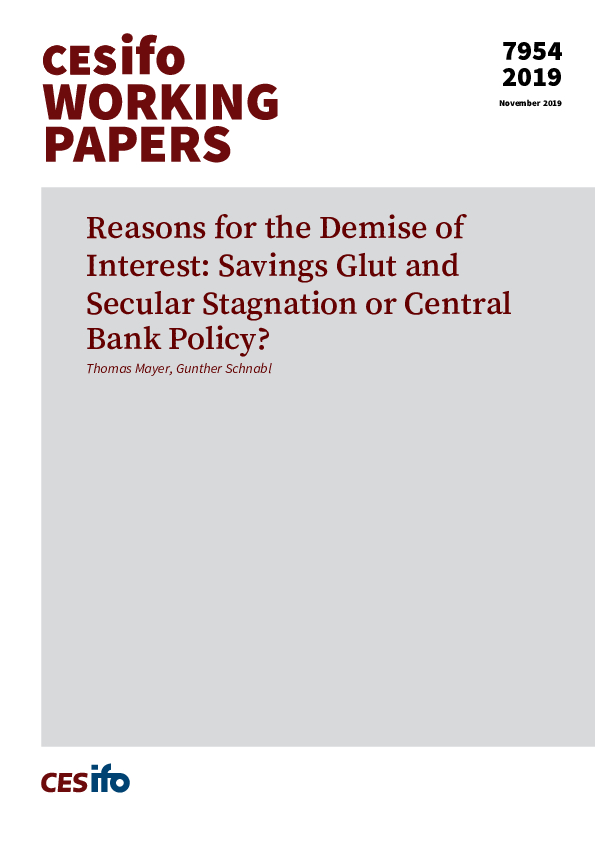Reasons for the Demise of Interest: Savings Glut and Secular Stagnation or Central Bank Policy?
CESifo, Munich, 2019
CESifo Working Paper No. 7954

In this paper we compare the Keynesian, neoclassical and Austrian explanations for low interest rates and sluggish growth. From a Keynesian and neoclassical perspective low interest rates are attributed to ageing societies, which save more for the future (global savings glut). Low growth is linked to slowing population growth and a declining marginal efficiency of investment as well as to declining fixed capital investment due to digitalization (secular stagnation). In contrast, from the perspective of Austrian business cycle theory, interest rates were step by step decreased by central banks to stimulate growth. This paralyzed investment and growth in the long term. We show that the ability of banks to extend credit ex nihilo and the need of time to produce capital invalidates the IS identity assumed in the Keynesian theory to hold permanently. Furthermore, we find no empirical evidence for the global savings glut and secular stagnation hypotheses. Instead, low growth can be explained by the emergence of quasi “soft budget constraints” as a result of low interest rates, which reduce the incentive for banks and enterprises to strive for efficiency.
Fiscal Policy, Macroeconomics and Growth
Monetary Policy and International Finance